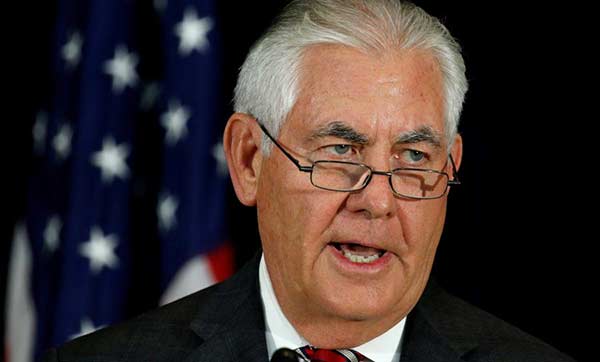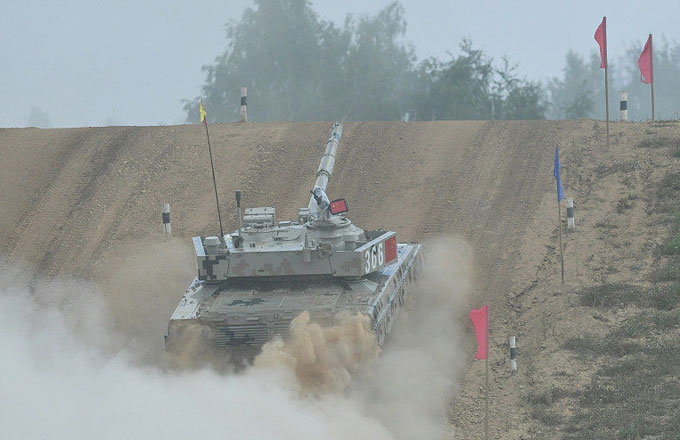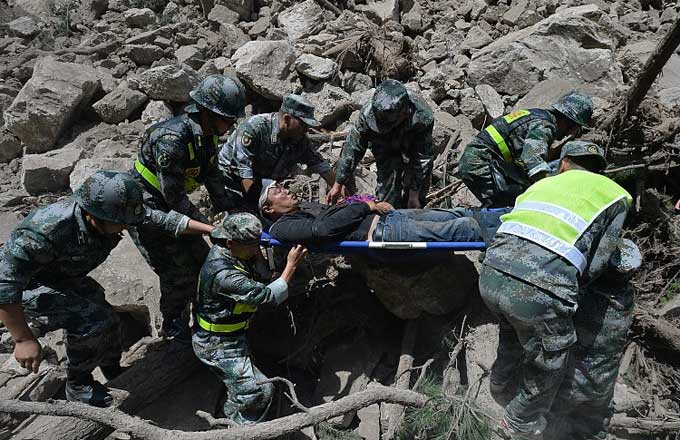Instead of hurling threats, US and DPRK should talk
 |
|
FILE PHOTO: US Secretary of State Rex Tillerson speaks during a press conference after talks with Chinese diplomatic and defense chiefs at the State Department in Washington, US, June 21, 2017. [Photo/Agencies] |
First it was United States Secretary of State Rex Tillerson stating Washington's willingness to talk with Pyongyang, if the latter halts its missile stunts.
Then US President Donald Trump on Tuesday warned the Democratic People's Republic of Korea against making "any more threats" to his country, which he promised "will be met with fire and fury like the world has never seen".
Neither seems to have worked, though. Pyongyang's attitude, which Tillerson deems critical to the US engaging in dialogue, remains defiant.
Responding to Tillerson's offer, DPRK Foreign Minister Ri Yong-ho said at the ASEAN Foreign Ministers' Meeting in Manila that his country "under no circumstances" will put its nuclear weapons or ballistic missiles on the negotiating table. And on Wednesday, the Korean People's Army announced it is "carefully examining" an operational plan for "enveloping fire" around the US military bases at Guam with its newly-acquired missile capabilities.
The latest round of saber-rattling between Pyongyang and Washington is particularly ominous because, although both parties sent "mixed messages" and hinted at a degree of flexibility, both set impossible preconditions.
So while it is good that neither has slammed the door shut on potential talks, it looks increasingly like a ploy to sabotage that prospect.
Pyongyang has justified its plan for missile strikes on Guam with Washington's "reckless military provocation", while the latter has employed the same pretext for refusing dialogue. Over time, this mutual finger-pointing has pulled both into a spiral of escalating distrust and hostility, which is the biggest obstacle to resolving the crisis.
The US' approach to the standoff has been counterproductive because it has simply escalated the threat from Pyongyang's nuclear/missile programs.
While some of Pyongyang's claims of technological breakthroughs no doubt need to be taken with a grain of salt, it has been making steady progress despite the strict international scrutiny and sanctions.
And now, Pyongyang has intercontinental ballistic missiles and reportedly a miniaturized nuclear warhead. From this point on, the threatening rhetoric from Pyongyang cannot be taken lightly.
United Nations Resolution 2371, which authorizes additional, potentially damaging sanctions against the DPRK's military adventures, is a timely response, and it is widely anticipated they will finally bite. But sanctions alone may not easily bring Pyongyang to its senses and the Beijing-proposed "dual suspension" approach, a freeze on the DPRK's nuclear and ballistic missile tests in exchange for a cessation of the large-scale military drills conducted by the US and the Republic of Korea, fair as it is, needs a starting point.
While making sure the UN sanctions are fully, honestly implemented, stakeholders must also make meaningful endeavors to persuade the US and the DPRK to take a step back from the brink.



























